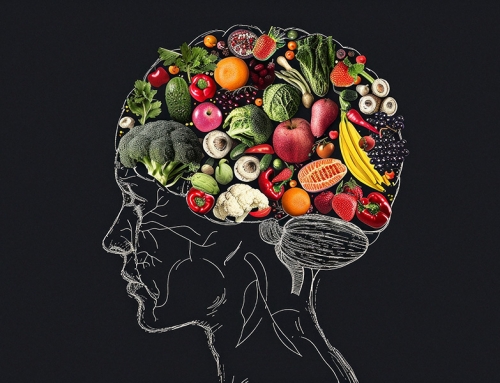Overview
According to the Food and Agriculture Organization of the United Nations (FAO), Food insecurity is the lack of regular access to safe and nutritious food for normal growth and development and active and healthy life. It has wide-ranging consequences that have adverse effects on children and adults. Limited food availability, poor food access due to transport limitations, household food preparation, storage issues, or unemployment are some of the determinants of food insecurity. In children, food insecurity has been associated with obesity, weight loss, overweight, developmental delays, and problematic behaviors. Food insecurity in adults is due to the consumption of low cost, poor quality food which is high in energy, sugar, and fat and low in nutritional value leading to negative health outcomes which include Hypertension, cardiovascular disease, and mental health problems. (1). Food insecure households face many daily challenges in accessing healthy affordable food. Food behavior and the psychological aspect of food insecurity must also be well understood. Special consideration has to be kept in mind while designing an intervention for vulnerable populations in food insecurity as interventions targeting the food behavior may prove to be beneficial to combat food insecurity (2).
Examples of some Behavioural Factors and Interventions to Address Food Insecurity
- In a study conducted by Earnshaw et al., a conceptual framework was developed describing the individualistic and structural stigma in addressing food insecurity (3).
- Lenk et al in a study found that food-insecure participants visit food stores more frequently and spend more on food (4)
- Another study by Ranjit et al. found that food-insecure use nutrition labels less and also cook at homeless. They also had lower healthy eating and cooking self-efficacy (5).
- A study by Janet et al used the “Cook together and Eat together” social marketing program for increasing fruits and vegetable intake and frequency of family meals. Two predominant behavior mediators were used, importance of family time and desire for children to learn, cook and become self-reliant adults. The study used product learning, price lowered, placement in the neighborhood, and promotions as 4Ps for the implementation of the program. The participation significantly increased fruits and vegetables served and eaten (6)
- Food insecurity has also been associated with binge eating because it leads to alternating periods of food deprivation and food access which mimic physiological and behavioral effects of dieting and overeating behaviors (7). Binge eating and Binge eating disorder are associated with food insecurity according to a study conducted by Hazzard et al which highlights the need for effective ways to intervene at both food insecurity and binge eating (8).
- A study by Anu et al studied the barriers and perceived facilitators for digital interventions for those with food insecurity, obesity, and binge eating, and engaging people with lived experiences via user-centered design methods may prove to be of great consideration for such interventions (9)
- Kate et al. conducted a study that found food bank–delivered intervention effective towards improving food security and reducing risk for type 2 diabetes among at-risk patients. The intervention consisted of monthly diabetes-appropriate food packages, text-based health education, and referrals to health care (10).
- Gomez et al. conducted a feasibility and acceptability study of Home-Based eHealth Intervention among food insecure elders. Educational and motivational content was disseminated to the elderly through an interactive TV app. Reminders were notified through the TV app. The content and themes included a) nutrition and diet tips for healthy eating, (b) healthy, easy to cook, and low-cost recipes, and (c) physical exercise programs. The intervention reduced the proportion of older adults with food insecurity, improved participants’ fatigue and physical function (10).
- A recent systematic review with a meta-analysis conducted by Oronce et al. in 2021 found providing food and monetary assistance was associated with improved food insecurity measures but there is a paucity of data on the impact of the interventions on health outcomes or health care utilization.
Conclusions
For building any intervention there is a need to understand daily challenges, food behaviors, psychological aspects, the individualistic and structural stigma associated with the population being targeted. In designing any intervention, a user-centric approach must be used for need assessment. Accessibility, cost evaluation, education, self-monitoring must be kept into consideration for making tailored and customized interventions for populations with food insecurity. Policies explicitly tailored to foster behavioural change, influence consumer behavior, and raise awareness towards healthy diets will also be needed. Advocacy behavior change towards healthy choices can be done via utilizing different behavior change theories involving different media and interpersonal communication (12) and innovative digital technologies.
References
- McKay FH, Godrich SL. Interventions to address food insecurity among Aboriginal and Torres Strait Islander people: A rapid review. Applied Physiology, Nutrition, and Metabolism. 2021;46(12):1448-58.
- Calloway EE, Parks CA, Byker Shanks C, Bowen DJ, Yaroch AL. A special issue addressing healthful food access and food insecurity: risk factors, behavioral variables, interventions, and measurement. Translational Behavioral Medicine. 2020 Dec;10(6):1249-54.
- Earnshaw VA, Karpyn A. Understanding stigma and food inequity: a conceptual framework to inform research, intervention, and policy. Translational Behavioral Medicine. 2020 Dec;10(6):1350-7.
- Lenk KM, Winkler MR, Caspi CE, Laska MN. Food shopping, home food availability, and food insecurity among customers in small food stores: an exploratory study. Translational behavioral medicine. 2020 Dec;10(6):1358-66.
- Ranjit N, Macias S, Hoelscher D. Factors related to poor diet quality in food insecure populations. Translational Behavioral Medicine. 2020 Dec;10(6):1297-305.
- Mullins JT, Walters J, Najor J, Mikuska J, Courtney A, Norman-Burgdolf H. Evaluation of a social marketing approach to healthy, home-cooked family meals for low-income mothers of young children. Translational Behavioral Medicine. 2020 Dec 1;10(6):1312-22.
- Christensen KA, Forbush KT, Richson BN, Thomeczek ML, Perko VL, Bjorlie K, Christian K, Ayres J, Wildes JE, Mildrum Chana S. Food insecurity associated with elevated eating disorder symptoms, impairment, and eating disorder diagnoses in an American University student sample before and during the beginning of the COVID‐19 pandemic. International Journal of Eating Disorders. 2021 Apr 22.
- Hazzard VM, Loth KA, Hooper L, Becker CB. Food insecurity and eating disorders: A review of emerging evidence. Current psychiatry reports. 2020 Dec;22(12):1-9.
- Venkatesh A, Chang A, Green EA, Randall T, Gallagher R, Wildes JE, Graham AK. Perceived facilitators and barriers to engaging with a digital intervention among those with food insecurity, binge eating, and obesity. Nutrients. 2021 Jul;13(7):2458.
- Cheyne K. Food bank–based diabetes prevention intervention to address food security, dietary intake, and physical activity in a food-insecure cohort at high risk for diabetes. Preventing chronic disease. 2020;17.
- Gomes LA, Gregório MJ, Iakovleva TA, de Sousa RD, Bessant J, Oliveira P, Branco JC, Canhão H, Rodrigues AM. A home-based ehealth intervention for an older adult population with food insecurity: Feasibility and acceptability study. Journal of Medical Internet Research. 2021 Aug 31;23(8):e26871.
- FAO, IFAD, UNICEF, WFP and WHO. 2020. The State of Food Security and Nutrition in the World 2020. Transforming food systems for affordable healthy diets. Rome, FAO. //doi.org/10.4060/ca9692en
- Oronce CI, Miake-Lye IM, Begashaw MM, Booth M, Shrank WH, Shekelle PG. Interventions to Address Food Insecurity Among Adults in Canada and the US: A Systematic Review and Meta-analysis. InJAMA Health Forum 2021 Aug 3 (Vol. 2, No. 8, pp. e212001-e212001). American Medical Association.
Affiliations
- Graduate School of Public Health and Health Policy, City University of New York, New York, NY, United States
- Foundation of Healthcare technologies Society, New Delhi, India






Leave A Comment